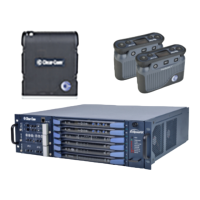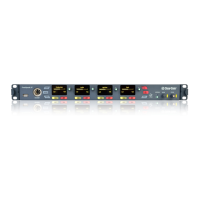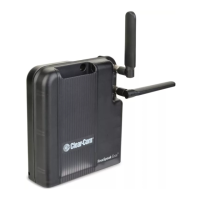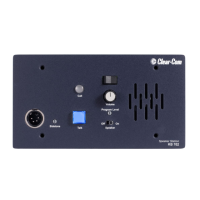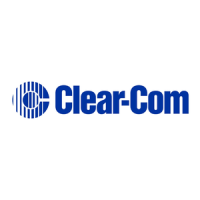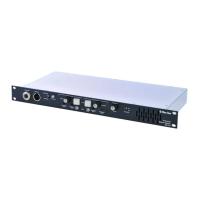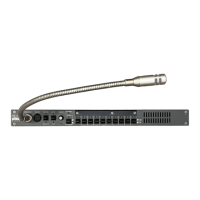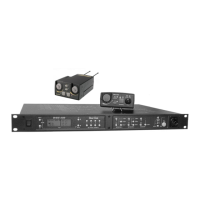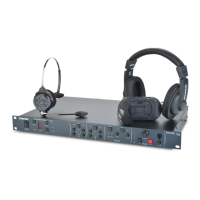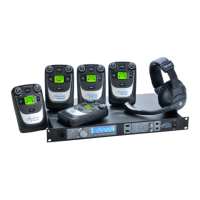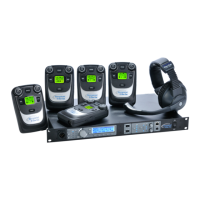FreeSpeak II for Eclipse | User Guide
that area. If it is between 10 and 20 users, place two transceiver next to each other, both with a
direct connection to the FS II Matrix.
If an extra beltpack user goes into a coverage zone with only one transceiver, and that user is
out of range from another transceiver, it will lose connection with the system. This is because
the transceiver has a maximum capacity of up to 10 beltpacks at a time. If one of the existing
users in that coverage area turns off a beltpack or leaves the area, then the extra beltpack will
find an open slot and will be reconnected with the system.
The proprietary technology within FS II permits the beltpack user to go between coverage zones
created by different transceivers connected to the Matrix, and for the system to hand over the
communication between beltpack and Matrix from one transceiver to the next one. Thus, a
larger, customizable communications area may be designed.
6.19 Coverage areas under various conditions
Just as with any other product communicating with radio waves, the effective distance between
the beltpack and the transceiver (the range) will differ depending on the particular environment
in which it is being used. Radio waves can be attenuated by walls, floors, ceilings, trees,
shrubbery, the human body (such as an audience), and numerous other objects. They can be
reflected and/or stopped by metallic objects such as structural beams, safety doors, lighting
equipment and truss, bodies of water, and so on.
Under ideal conditions, the maximum range between an FS II beltpack and a transceiver is 500
metres. Typical distances are between approximately 50 metres (about 160 feet) and 150
metres (about 485 feet), depending on the particular environment.
As the transceiver requirements for a particular installation are being determined, keep in mind
both the number of beltpack users who will be working in a particular area (based on the 10
beltpack capacity of each transceiver), and the layout and potential RF attenuating and
reflecting items in the location. Be conservative in distance estimates to make sure that enough
transceivers are included to provide the necessary coverage for the installation. Remember that
additional transceivers may be added to a Matrix.
6.20 FS II Transceiver setup rules and tips
Keep the following general rules and tips in mind:
l
Keep transceivers high (typically, though lower placements away from interfering objects
can at times be beneficial) and line-of-sight.
l
Keep them away from larger metallic objects and surfaces, and from lighting truss.
l
Transceiver coverage is circular so put the transceivers in the center of the area in which
coverage is required.
Page 77

